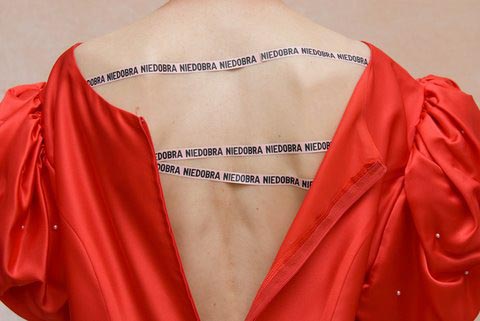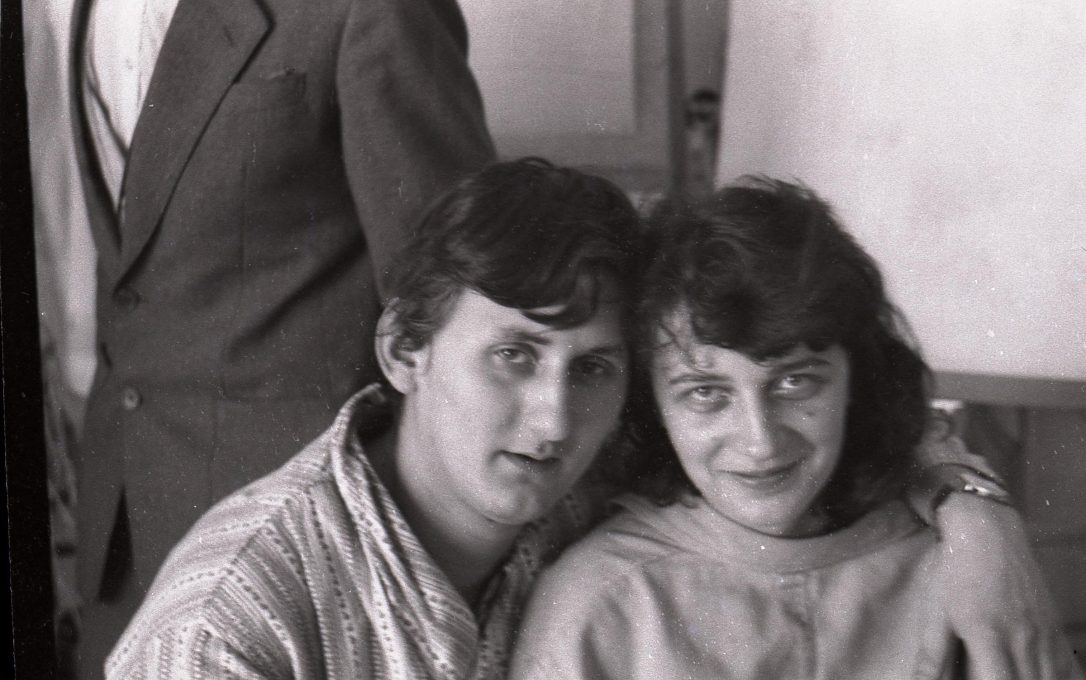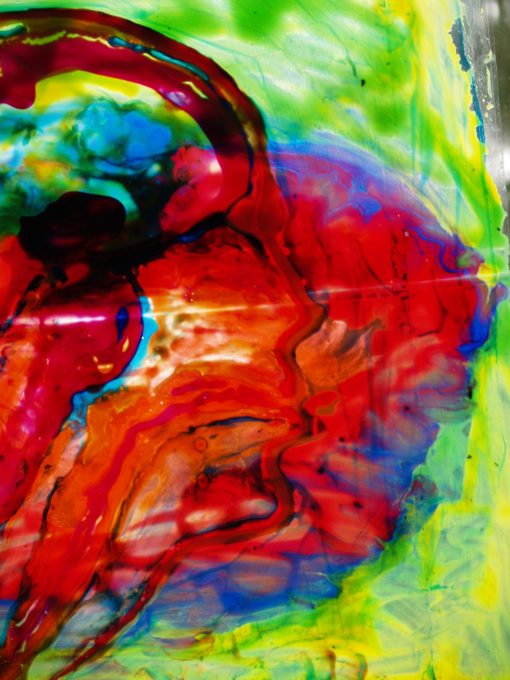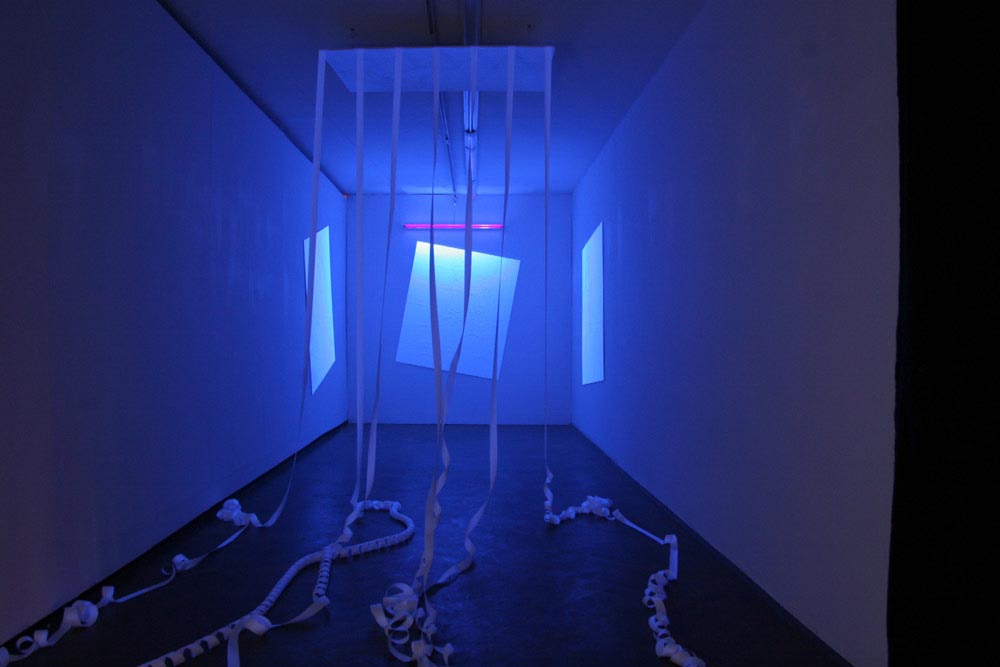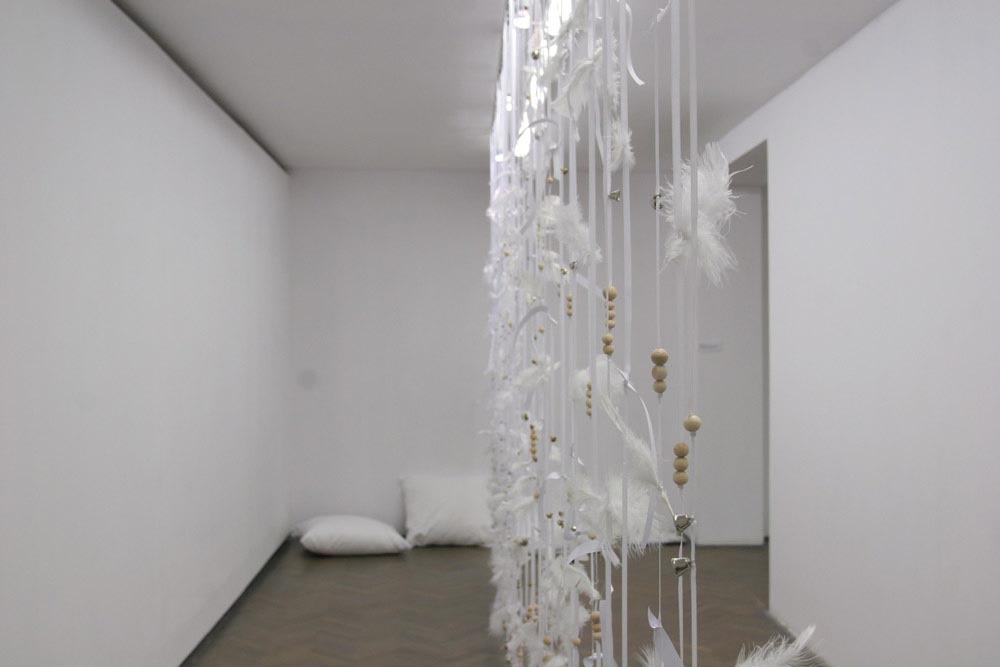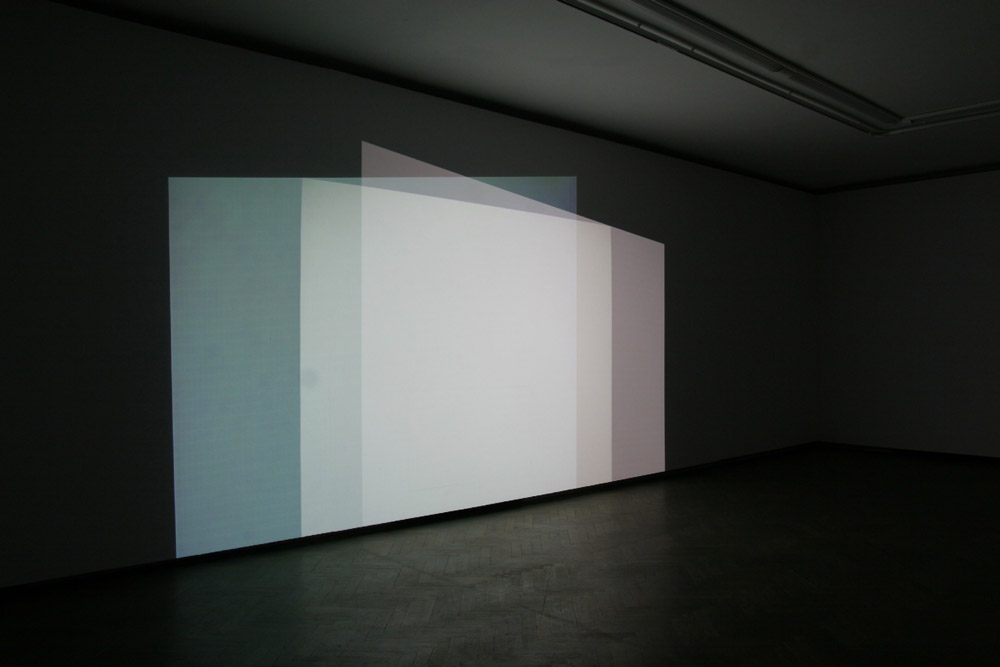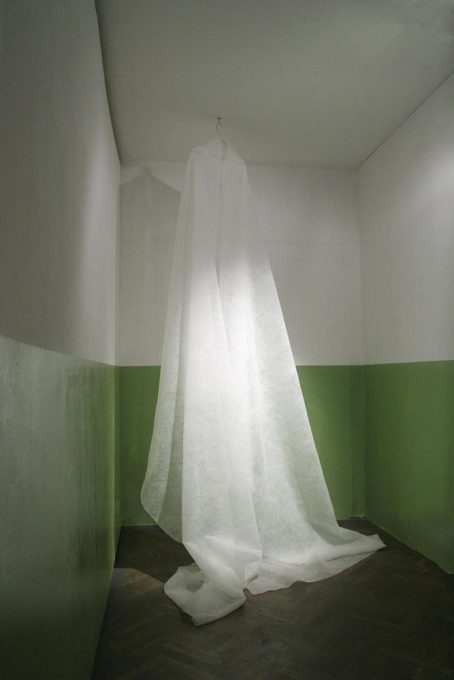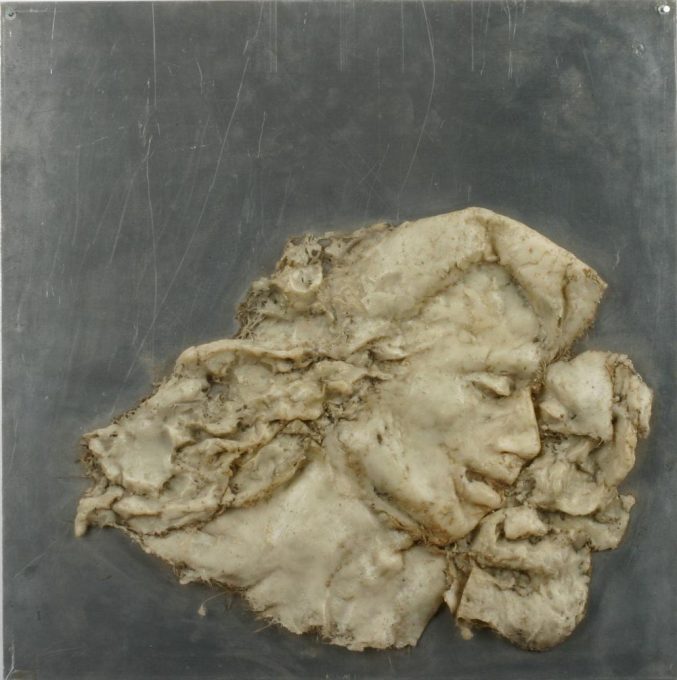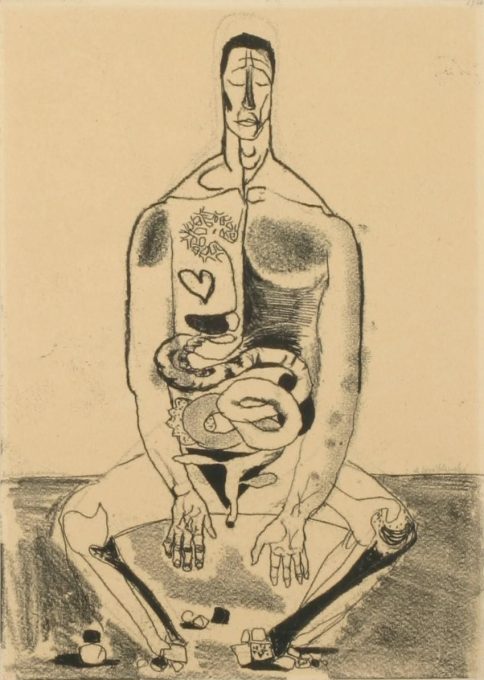Depression
I have blahs. What is the difference between blahs and depression? Where lies the border between simply having a bad day and the beginning of a dangerous illness? How to spot the moment when we cannot exercise our will in order to force ourselves to be punctual or to fulfill more and more demanding tasks?
Statistics show that roughly half a million people take antidepressants. Maybe they are too readily available. Maybe we have an inclination for pill-popping. Maybe the pace of our living is too fast for time to be our cure.
Pessimistic estimates suggest that at least twice as many people should actually take psychotropic drugs but they are ashamed of visiting a psychiatrist. Maybe they do not realize that they need help. Maybe they are not aware yet that they aren’t having a bad mood or that it isn’t simply a next failure which can be dismissed by saying “It just isn’t my day.”
How long does it take for us to pretend that it’s not our problem? For how long do we actually fail to notice that it’s a serious illness that we suffer from? It’s not terminal although it can, indeed, lead to death. I will kill myself. I will shoot myself in the head. When do such actions become possible?
Our family and friends. Don’t they understand? Don’t they know how to help? They prefer not to believe – it’s easier for them to turn their backs on us then. Or do they suffer together with us?
What has to happen for us to finally visit a doctor? For us to actually want help? For us to fight for our lives? For us to start noticing the precious things in our lives and not brood over those that are destructive?
They say that when depression comes for the second time, it’s much heavier, harder, stronger. To what extent do we actually have control over our psyche? Can we teach ourselves to anticipate it? Can we push it away with the strength of our will perhaps, or with acceptance of our fate, or with yet another dose of drugs?
According to Kazimierz Dąbrowski, going through depression is a prerequisite experience on our way to perfection. But what about people who don’t strive to achieve perfection? Coincidence, fate, genes?
Magdalena Godlewska
Depression and art.
In a recently published book entitled Fashionable Nonsense: Postmodern Intellectuals’ Abuse of Science, its authors, Alan Sokal and Jean Bricmont, throw ridicule at these specialists in the field of humanities who easily juggle with theories and notions pertinent to areas of knowledge unfamiliar to them. The book caused a scandal in the West, but in Poland its publication went unnoticed. Although having read the book it is hard to agree with some of the authors’ conclusions, there remains an irrefutable conviction that intellectuals, by committing the sin of pride, feel entitled to discuss matters alien to their field of study. I am afraid that this observation applies also to art historians who resort to psychoanalysis as a means of interpretation, even though it was Sigmund Freud himself who legitimized such an idea as he viewed art as the sublimation of drives. Also Freud’s disciples and his followers saw a connection between mental state and artistic creativity. The stance voiced by Hanna Segal, who assumes that art is created as a result of reworking depressive states, is particularly crucial as far as this connection is concerned. She discussed her view most comprehensively in a famous essay entitled Joseph Conrad and the Mid-Life Crisis in which she argues that the writer went through a lot of hardships in his childhood and “carried a severe depression in his heart”. Thanks to youthful romanticism and love of travel and adventure, he was able to cope with it for a long time, but “coming to mid-life crisis these defences began to fail him (…). He had to look within himself, come to terms with his inner world and attempt to restore it. He had to face the heart of darkness, his destructive, murderous and suicidal impulses, the destruction of his inner world. (…) Conrad had to succumb to madness or death, or make a heroic effort to restore his inner world in the process of writing.”[1]
The source of Segal’s observations about depression lies in the theories of Melanie Klein, an outstanding psychoanalyst who in the 1930s was a trainee at Freud’s disciple Karl Abraham’s practice. Just like the founder of psychoanalysis, Klein expressed a conviction that experiences from early childhood and its oral stage, and more significantly child sexuality, lie at the core of the shaping of an adult’s psyche. Inappropriate resolution of inner conflicts that occur at that stage of life results in suffering from depression in adulthood. To put it simply, “depressive persons are those who had had a lot of bad experiences as far as the relationships with their mothers at the early stages of their life are concerned; in their adulthood, they enter into relations with people who disappoint and frustrate them. Instead of getting angry at or complaining to such a person, or putting a stop to such a relationship, depressive persons develop a sense of guilt, and direct their anger and aggression against themselves. Such emotions often take the form of suicidal thoughts. Depressive persons experience hostility and are subjected to aggressive impulses directed towards themselves, which is often manifested by means of self-destruction and self-depreciation.”[2]
A depressive position, or simply depression, is caused by bad experiences of reality that are connected with the loss of an object. This fact activates subconscious memories of early childhood experienced by every child, but in various ways. Such memories shape human psyche. If the loss of the primary object, i.e. the mother’s breast, has not been properly reworked, every loss will always cause a depressive state; in other words, it will reopen the old unhealed wound. It is worth it to make a distinction between depression and mourning. Three stages of the latter, although also brought about by the loss of an object, guarantee a positive outcome. Freud pointed out that the first stage involves understanding and acceptance of the loss, the second, i.e. mourning proper, withdrawal of attachment to the object, and the last – the creation of a relationship with another object. If mourning remains unfinished, it leads to melancholy, which, however, differs completely from depression as it does not pose a threat of destroying the inner world, i.e. it is not explicitly destructive in nature.
When it comes to depressive states, the distinction between the signifying and the signified is blurred; symbols are internalized, i.e. they become internal objects, and threaten the stability of one’s mental construction. In effect, the so-called symbolic equation takes place, followed by the omnipotence of phantasy, both of which get upper hand over rational thinking. Such phantasies are dangerous for the subject. The role of the psychoanalyst boils down to reinstalling the ability to distinguish between what is real and what is just a figment of one’s imagination. In Unwashed Souls Witkacy referred to this phenomenon by stating that “Dr. de Beaurain wanted to save [him] from [himself]”.[3] Although Hanna Segal does notice a kind of kinship between the therapeutic process and artistic creativity, she never considers them on par. Drawing upon such eminent personalities as Conrad and Marcel Proust, she attempts to prove that the artist himself is capable of deep insight into his own mental condition, which enables him to restore his inner world and to recover from depression by means of taking a realist stance. According to Freud, psychoanalysis cannot ever be finished. Similarly, an artist is not able to complete the process of restoration once and for all because, due to the recurring nature of depressive states, it is impossible to uproot their source. Paradoxically, such a situation is beneficial for art since it guarantees the existence of a creative impulse which is born out of an individual’s restoring need. The question whether it is legitimate then to assume that only a depressive state may inspire an artist to create a great work evades plain answer. Again, it is worth it to resort to Witkacy who stated in Unwashed Souls that “all work known pompously as ‘creative’ stems from complexes which have not been disentangled and that it dies down once they are resolved, the way a mountain stream dries up in its riverbed in summer.”[4] This, however, poses another question as to whether a person who does not experience depressive states is capable of becoming a true artist. Can an adult who did not go through disturbed infancy and had all primary conflicts resolved properly become a profound artist? Hanna Segal seems to be answering this question to the contrary, which would mean that only people who experience depression are capable of creating great works of art. Nevertheless, as it has already been mentioned, the very nature of everybody’s mental development at an early stage must necessarily involve the loss of the ideal object. Hence, it is always the case that people experience a sense of loss, i.e. an empty spot on which individuals project all their desires and frustrations. In excess, they render the subject incapable of dealing with them, and as such may become the origin of depression, which, however, does not have to turn into a clinical condition or be noticeable to outsiders. Through art, an artist may restore his inner world on his own. He may reveal to the outside world the matters that he is incapable of resolving through his works, but this may not be always plain enough for the viewer. On the other hand, an artist’s work also entails notions of which the creator is unconscious; such notions, in turn, may be conspicuous for the viewer but not for the artist for whom they will be revealed only on condition that somebody draws his attention to them. This shows explicitly how the interpretation of a work of art resembles the interpretation of dreams.
A creator strives to control sudden and threatening emotions by according his work a certain form. The correlation between form and content is inevitable since it provides a counterbalance for tensions and evokes a feeling of harmony. Of course, this notion is not to be viewed in its classical sense. Today it involves rather the appropriateness of the means employed to the task endeavored than precise proportions or the use of color. Just like surrealist paintings by Salvador Dali or Paul Delvaux only imitate dreams, expressionist paintings, though violent and terrifying, do not have to constitute a reflection of the artist’s inner problems. It is often the case that the great effort with which an individual tries to control his frightening inner chaos produces a work that is not frightening at all. It is also frequent, however, that at first glance such works generate an disturbing sensation; they evoke mixed emotions which range from admiration to outrage. By means of harmony which is hard to capture, they involve a parallel existence of good and evil, of beauty and disgust. Segal explains that in its deepest sense, a creative act draws upon an unconscious memory of a harmonious inner world and the experience of its destruction, which signifies that a depressive position lies at its core. An artistic impulse consists in an attempt to regain and restore the lost world.[5] Lost paradise is the primary inner harmony that falls apart when the primary object is cleft into good and evil, which happens as a result of the diversification of the world. In relation to the object, this entails the emergence of ambivalence: the desire for love and the will to destroy become forever inseparable. This ambivalence may also be experienced by the viewers when they encounter works of art created in an attempt to restore the artist’s inner world.
There are various reasons that deem it difficult to point out artists whose works seem to reflect depressive states. In Poland, where it is a particularly volatile issue, one is bound to be charged with lack of sensitivity and empathy, as well as a trespass on privacy and intimacy. The situation is slightly different in Western Europe; not to mention the United States, where the interpretation of art based of psychoanalytic approach is widespread. It is most likely that every example that will be called upon here shall raise objections, maybe with the exception of such stereotypical works as Mark Rothko’s black paintings and Jackson Pollock’s drippings. This, however, does not change the fact that when viewing such works as Francisco Goya’s Cannibals, Hans Bellmer’s dolls, Andrzej Wróblewski’s Ryby bez głów (Eng. ‘fish without heads’), or Katarzyna Kozyra’s Piramida zwierząt (Eng. ‘pyramid of animals’) one cannot help but get an impression that at the moment of creation these artists’ inner world was pervaded with aggression and the instinct of death. According to Segal, true restoration, as opposed to manic restoration, must necessarily entail the acceptance of aggression and its effects.[6] It seems that Kozyra’s work constitutes a particularly relevant example. Everything that the artist said about the creation of the pyramid and what is known about what she went through at that stage of her life having to cope with a serious illness may be viewed as a confirmation of the thesis that she was in a depressive state at the time. She found relief in creating a work of art that was received with a great deal of opposition by many viewers who perceived it as the epitome of cruelty towards animals. The artist tried to explain that her aim was to condemn such practices that allow for the killing of animals. Although there are no grounds to doubt her words, she failed to convince the majority. A feeling remains that there is something more to it, something that cannot be grasped. Such is the case when a work of art is a result of an attempt to restore one’s inner world. A viewer is incapable of understanding it fully. Intriguing obliqueness prevails; even the author is not entirely able to provide an explanation of the hidden sense since not everything that an artist creates is a result of a conscious effort. This also applies to old art, even if we do tend to put it down to the want of information about the period. Michelangelo’s great work Tondo Doni will remain mysterious and thus extraordinary forever, regardless of numerous attempts to interpret it, just like Rembrandt’s The Prodigal Son, as well as many other outstanding works by most distinguished artists.
It is also worth it to bear in mind that depression is connected with narcissist problems, which further complicates the matter, especially as far as artists are concerned. By creating a work of art, an artist puts his self-esteem to a test. When his work does not gain approval, depression may become more severe and the next attempt at recovery even more difficult. Psychologists accept the assumption that a subject who suffers from depression fails to recognize the distinction between his inner world and his body defined in sociological terms. Giddens notices that “as a character disorder, narcissism is a preoccupation with the self which prevents the individual from establishing valid boundaries between self and external worlds.”[7]. In both cases we are dealing with the loss of self-identity. Self-portraits may be a manifestation of the artist’s struggle with depression which is accompanied by a narcissist need of boosting his self-esteem. When in the process of painting the artist gazes at his reflection in the mirror, or examines his facial features in any other manner, he manages to blend his inner and outer image. Just like a self-portrait is separate from its model, the inner world becomes disconnected from the body which turns into an object, something outside the self. In the history of art, there were many people who exploited their own image in their works, for instance Dürer, Rembrandt, Cézanne, Van Gogh, De Chirico, Wyspiańki, Waliszewski, and Witkacy, as well as such modern artists as Kozyra and Paweł Althamer. All of them gazed at their own face with great intent, thus seeking to change it into an object and they succeeded in the attempt. Then they had to re-embark on the process of restoration once they felt that their inner world began to reign over reality again, i.e. the world started to lose its shape and became hostile because of the abundance of images of death and self-aggression.
A depressive and narcissist artist often does not appreciate and respect his own works; he vents aggression on them, does not wish to show them, and is embarrassed. They are like excrement to him, he destroys them, thus, as if, inflicting physical pain upon himself. When he manages to defeat depression, his work of art starts to possess its own intrinsic value to him, as if it were a newborn baby. It becomes an object, something in the outer world. Again, one can easily draw upon the history of art to find artists who attempted to assault their works in a moment of tension and almost palpable anxiety: Podkowiński, Gierymski, Van Gogh, or Katarzyna Kobro. There are also artists who are unable to part with what they have created. Although explanations vary from one individual to another, in most cases such actions generally stem from the fact that the artist has not separated his work from the self. His narcissist and depressive perception makes him assume that he are still connected to his works with an inexplicable bond.
Finally, this discussion, however brief, needs to touch upon the issue of reception. According to psychoanalytic approach, works of art gain acceptance provided that they reach the viewers’ unconscious desires and help them cope with their problems. It seems legitimate then to say that through art, also the viewers receive an opportunity to look within themselves and restore their inner world.
Joanna Sosnowska
[1] Segal, Hanna. “Joseph Conrad and the Mid-Life Crisis” in Psychoanalysis, Literature and War: Papers 1972-95. London: Routledge, 1997. [p. 132]
[2] Pawłowska, M. Psychoterapia pacjentów depresyjnych w ujęciu analitycznym. http://free.polbox.pl/d/depresja/psy.html and http://www.psychiatria.pl/txt/a,4366,3
[3] Witkiewicz, Stanisław Ignacy. “Unwashed Souls. A Psychological Study of the Inferiority Complex Carried Out According to Freud’s System with Special Attention to Polish Problems” in The Witkiewicz Reader. Daniel Gerould, ed. Evanston, Illinois: Northwestern University Press, 1992. [p. 311]
[4] Witkiewicz, St. I. ibidem, p. 311.
[5] Segal, Hanna. “Art and Depressive Position” in Dream, Phantasy and Art. London, New York: Routledge, 1991.
[6] Segal, Hanna. Ibidem.
[7] Giddnes, Anthony. Modernity and Self-Identity. Cambridge: Polity Press, 1997. [p. 170]
Curator: Magdalena GodlewskaBogna Burska

PLAN YOUR VISIT
Opening times:
Thuesday – Sunday
10:00-18:00
Last admission
to exhibition is at:
17.30
